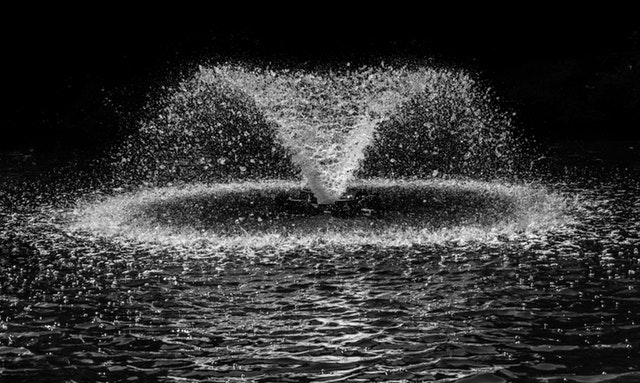
Water fountains are pretty to look at, and they’ll definitely impress anyone who sees them. However, they can also upset some people, especially those who think that water fountains are just an extravagant and irresponsible waste of water.
The question is, though: are they right in thinking so? Is owning a water fountain akin to being complicit in water wastage, something that’s frowned upon especially in these environmentally conscious times? Or can fountains actually recycle water?
To answer those questions, first, we need to look at how water features actually work.
The Basic Mechanics of a Water Fountain
Water fountains may seem complicated at first, but they’re really quite simple as far as machines go. They only seem to be so because of many modern fountain installations today, especially those found in public places, have additional technology integrated into them that allow them to release jets of water into the air in timed sequences. Besides this, every fountain ever constructed follows the same template and works in pretty much the same manner.
The basic mechanical layout of a water fountain involves four parts: the water reservoir, the water pump, the fountain piping and the fountain architecture itself.
- The water reservoir. One of the most visible elements of a water fountain. This is essentially where all the water ends up, and is usually shaped like a pool, a basin, or an artificial pond.
- The water pump. This is what does most – if not all – of the work involved in a fountain, pumping the water up the fountain architecture where it then flows down into the reservoir. This is usually hidden from view, either installed in a chamber concealed in the reservoir or in the fountain architecture itself.
- The fountain piping. Another element that’s usually hidden, this is how the pump delivers the water to the fountain architecture.
- The fountain architecture. Basically, the most visible element of a water fountain usually styled in an artistic fashion. It’s where all the water either sprouts from or flows down from, to pool at the reservoir.
How these four parts work together to bring you the relaxing display of a working water fountain is pretty simple. First, water is deposited into the water reservoir. Once the water level in the reservoir is high enough, the pump is then switched on. The pump pulls water from the reservoir and pumps it up the fountain piping. The piping then brings the water up the fountain architecture where it flows down back into the reservoir. From there the cycle begins anew.
How a Water Fountain Recycles Water
As we can see, the basic setup of all water fountains involves the water put into its reservoir being looped through its system in a continuous cycle – instead of the usual perception that it continuously pulls fresh water from connected sources to function. It keeps on using the water already placed in its reservoir in an endless loop.
Of course, this doesn’t mean that it doesn’t need water beyond what’s already put into it. Water is constantly evaporating, especially when it’s being looped through piping and then shot into the air just like a fountain would. Some of it will need to be replaced as the water fountain is continuously put into operation, but this less of a total refill and more of just a topping-up. (See also: 9 Tips for Conserving Water in the Home)
Depending on the size of the fountain this topping-up takes place once or twice every week. This helps keeps the water fountain continuously working and prevent the pump from burning out – as it is wont to do if it runs out of the water to pump.
Water Fountains: A Waste of Water?
With all of this information, can we finally answer the question: are water fountains actually a waste of water? The answer here is a clear and resounding no. While it is true that the bigger ones actually use quite a lot of water, this water is constantly reused and treated with chemicals to ensure sterility. Many fountain owners, especially those with smaller-scale models, also use their fountain water on their lawns as well, so it all ends up used in the end.
Image Credit: Pexels
About The Author:
Anne Kamwila is a freelance content writer and a digital marketer. She is passionate to write about health, technology, and business related guides, news, and books.




